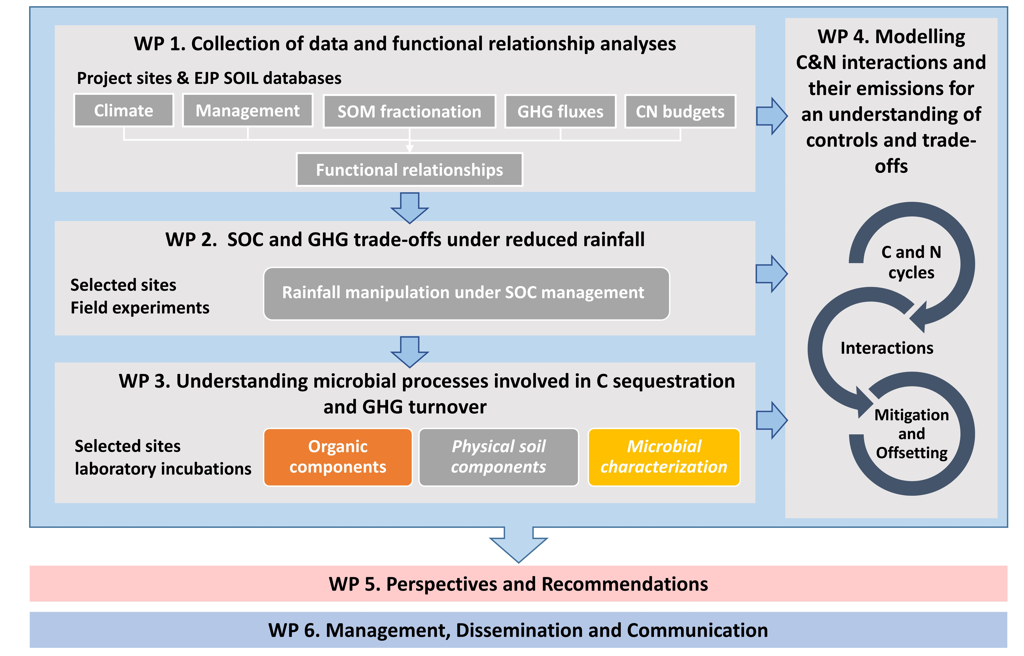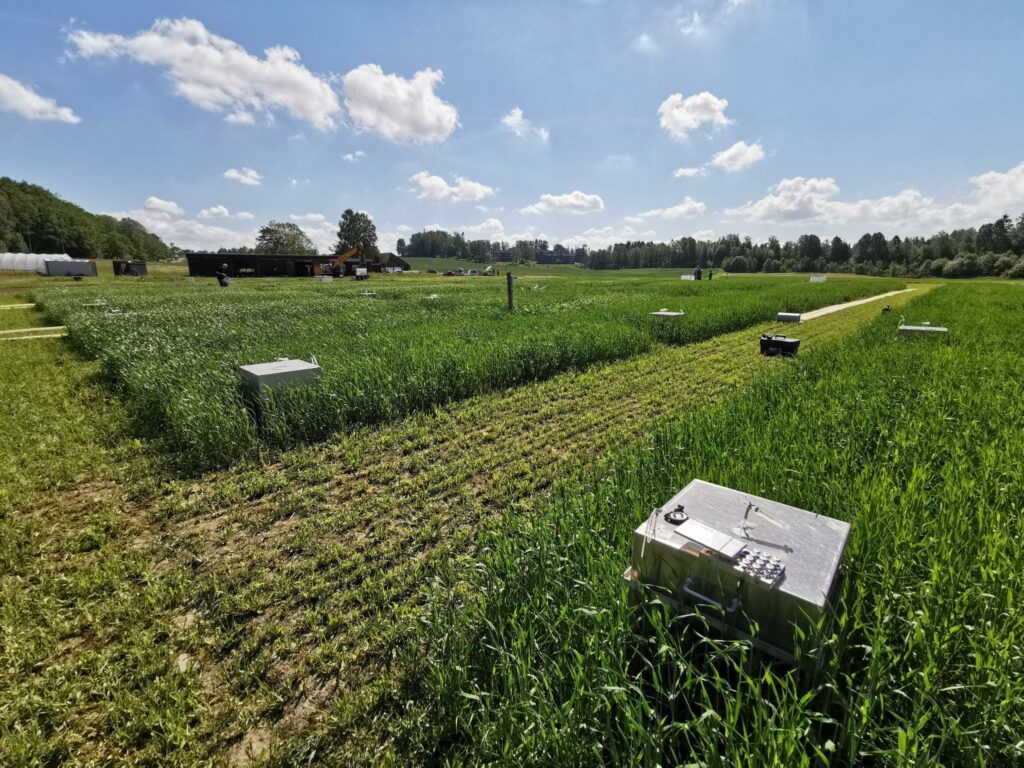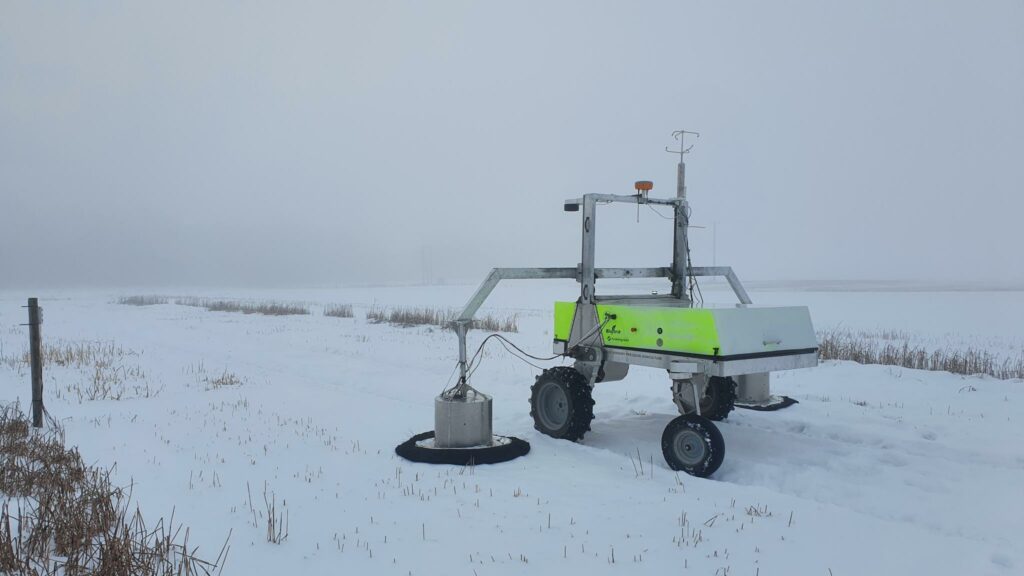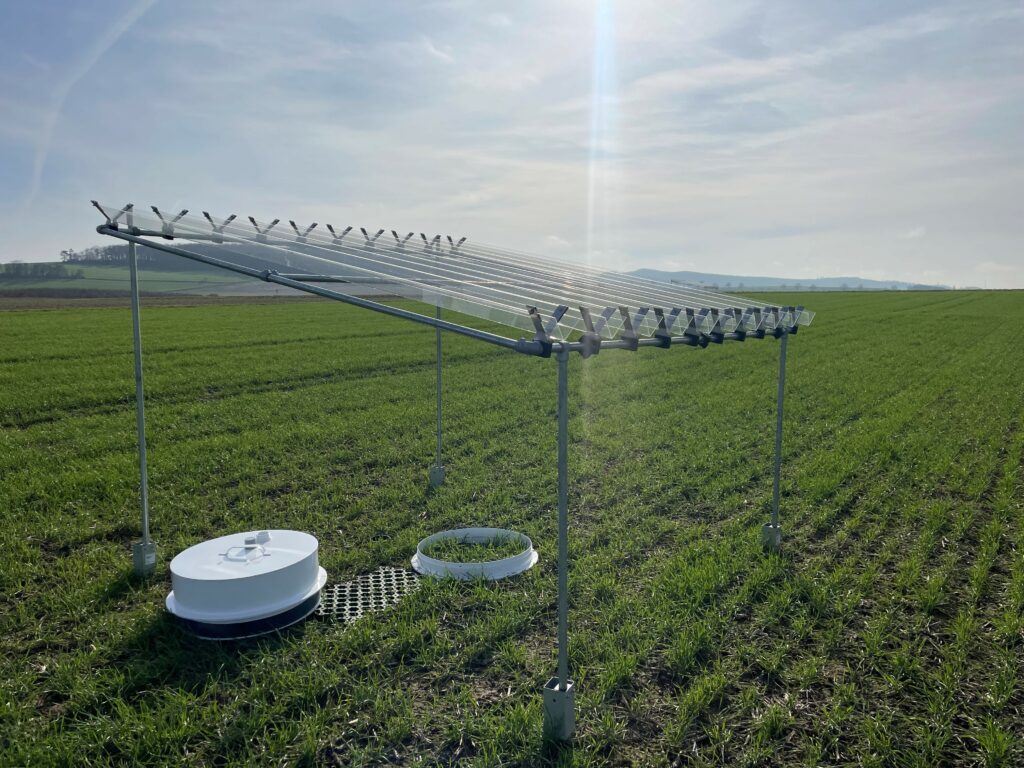TRUESOIL has been envisioned based on existing research sites and builds on the capacities and expertise of its consortium members. The research will be along six work packages (WPs).

WP 1: Collection of data and functional relationship analysis
WP leader: INRAE
To elucidate controls and trade-offs between SOC sequestration and GHG emissions, WP1 will couple gas exchange measurements (Eddy Covariance or ground-based chambers) with detailed analyses of soil physico-chemical and biological properties. The specific objectives are to:
- Collate long-term data across agroecosystems to build on data from ongoing EJP-Soil project-related sites and databases.
- Analyse data sets for possible relations between soil OC, GHG emissions, soil properties across agroecosystems and agroecological practices.
- Evaluate the explanatory value of various soil properties for soil OC changes and GHG emissions in study sites.
- Clarify possible synergies, trade-offs, and data gaps with respect to process-based understanding (WP3) and Sustainable management recommendations (WP4).
WP 2: SOC and GHG trade-offs under reduced rainfall
WP leader: UGOE
WP2 addresses the following objectives:
- Quantify soil OC pools (i.e., particulate and mineral-associated organic carbon) and GHG emissions under ambient climate and reduced rainfall manipulated with rain-out shelters.
- Investigate the effects of agroecological practices aiming to increase or maintain SOC on GHG emissions, under reduced rainfall.
- Elucidate patterns on the interactions between GHG emissions and SOC sequestration under reduced rainfall across climate zones.
WP 3: Understanding microbial processes involved in C sequestration and GHG turnover
WP leader: NMBU
WP3 addresses the following objectives:
- Provide community-level microbial CUE values for topsoils and relate them to management systems, field manipulation, climate regime, native CNP stoichiometry, and taxonomic microbial community composition.
- Understand how transient and persistent changes in soil moisture affect the potential of soils to sequester carbon.
- Explore how C-saturation affects microbial CUE and N cycling potentials.
- Understand how a soil’s potential to sequester C affects N cycling potentials and their N2O production and release.
WP 4: Modelling C & N interactions and their emissions for an understanding of controls and trade-offs
WP leader: UCD
WP4 addresses the following objectives:
- Simulate C and N emissions as well as their density/stock changes using DNDC v9.5.
- Assess the impacts of agricultural land uses, soil types, management practices, and climatic variables, including drought, on GHG emissions and C density/stock changes.
- Evaluate the potential for GHG mitigation and offsetting options.
- Develop functional relationships between C and N emissions and the uncertainties associated with fluxes and density/stocks across different agricultural land uses.
WP 5: Perspectives and Recommendations
WP leader: UCH
WP5 to address the following objectives:
- Generation of an overview of the effects of increasing SOC on GHG emissions.
- Provision of future research recommendations to understand climate effects on GHGs.
- Delivery of general and site-specific recommendations on how to stabilize SOC without increasing non-CO2 GHG emissions, and policy recommendations.
WP 6: Management, dissemination, and communication
WP leader: UCD
This WP is dedicated to ensuring effective management of the project and communication among consortium members, the efficient transfer of knowledge to stakeholders, as well as the dissemination of results to the scientific and public domain. The main objectives are to:
- Manage the project and identify the target audience(s) and the settings in which the research findings and recommendations are to be delivered.
- Ensure effective communication and interaction with relevant stakeholders and policymakers at national and international levels.
- Facilitate the uptake of the research and its inclusion in policies and legislation to foster implementation.
- Exploit several important dissemination channels, including current and former project partner networks and stakeholder communities, as well as social/professional media.
- Promote transnational knowledge exchange through various media.




